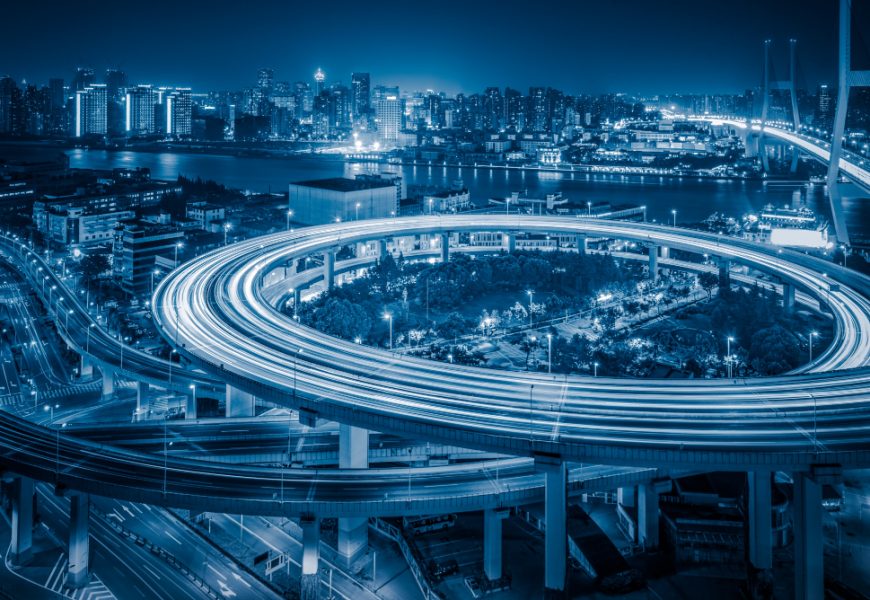Smart Cities in Action: How Cutting-Edge Technologies Are Redefining Infrastructure, Mobility, and Sustainability for Urban Growth
Cities around the world are undergoing an unprecedented digital transformation, reshaping their infrastructure, mobility systems, and sustainability practices in ways that would have seemed futuristic just a decade ago. With rapid urbanization—nearly 70% of the world’s population is projected to live in cities by 2050—the question is no longer whether technology will transform urban life, but how intelligently cities will integrate these innovations to improve efficiency, livability, and environmental resilience.
From data-driven transport networks to intelligent energy grids, cutting-edge technologies are being applied to the everyday challenges of congestion, pollution, waste, and resource management. The result is a new model of urban growth: one where infrastructure is not simply built and maintained, but actively evolves in response to data, powered by artificial intelligence, advanced materials, and the Internet of Things (IoT).
Data-Driven Transport Networks
Traditional traffic management relied on fixed schedules and static infrastructure. Now, real-time data from sensors, GPS-enabled vehicles, and citizen mobility apps are enabling cities to fine-tune transport in real-time.
For example, Singapore’s Smart Mobility 2030 initiative uses predictive analytics to optimize bus and train schedules according to commuter flows. Similarly, Barcelona employs adaptive traffic-light systems that respond dynamically to congestion—reducing travel time and cutting harmful emissions. Meanwhile, the integration of shared micro-mobility solutions, like e-scooters or bike rentals, is being coordinated with urban planning to ensure last-mile connectivity.
Intelligent Energy Grids
Urban energy use is notoriously high, but intelligent grids are making consumption smarter and cleaner. Smart meters and IoT sensors not only track real-time usage but also empower consumers to optimize their energy consumption. Some cities are even experimenting with district-wide peer-to-peer energy sharing, enabling households with rooftop solar systems to sell surplus power back into the grid.
Copenhagen, for instance, has launched one of the world’s most advanced smart grid systems, balancing renewable generation with dynamic electricity pricing. This reduces pressure on centralized systems and accelerates the transition toward carbon neutrality.
Next-Generation Building Materials
Decarbonizing construction is another pillar of modern infrastructure. Traditional concrete production is one of the largest single contributors to global CO₂ emissions. Responsive municipalities and private developers are turning to alternatives: self-healing concrete, engineered timber, and 3D-printed components that cut down on waste and transportation costs.
In Dubai, 3D-printed office buildings are becoming mainstream, reducing overall material consumption while speeding up construction timelines. Similarly, cities in Scandinavia are pioneering timber skyscrapers, leveraging sustainable forestry and advanced composites for strength.
Autonomous Logistics
The future of urban mobility is not just about people—it’s also about goods. Autonomous delivery robots, drones, and self-driving trucks are already being piloted in dense urban areas to streamline logistics. Shanghai’s autonomous drone deliveries are now a regular occurrence, enabling fast movement of medical supplies and essential goods, particularly during high-demand periods.
This shift not only reduces congestion on city streets but also accelerates supply chains, offering businesses and residents more reliable access to services.
AI-Powered Public Safety Systems
Public safety is being transformed through AI, predictive modeling, and interconnected monitoring platforms. Predictive analytics can identify potential crime hotspots, while AI-powered cameras detect unusual activity without compromising privacy. For instance, Rio de Janeiro’s operations center integrates data from weather forecasts, traffic patterns, and security networks to proactively manage emergencies and public safety challenges.
These systems don’t merely improve response times; they allow city planners to design safer, more resilient neighborhoods by assessing risk factors in advance.
IoT Bringing Tangible Improvements to Daily Life
IoT technologies are adding layers of intelligence to the urban environment. Streetlights that dim when no one is nearby, bins that notify collection services when full, and water management systems that detect leaks automatically are no longer pilot projects—many cities have scaled them widely.
Barcelona’s IoT waste bins alone have saved millions of euros by reducing unnecessary collection trips, cutting both operating costs and carbon footprints. Meanwhile, in Seoul, IoT-linked flood sensors provide early-warning alerts in storm-prone areas, preventing costly damages and saving lives.
The Convergence of Digital Innovation, Engineering Breakthroughs, and Environmental Responsibility
The evolution of urban infrastructure isn’t happening in isolation. It’s driven by cross-sector convergence—digital innovation, engineering advances, and pressing environmental imperatives aligning into a single agenda for smarter, greener cities.
5G-Enabled Connectivity and Cloud-Based Platforms
Urban innovation relies on seamless, high-speed communication. With 5G networks and cloud-powered management platforms, cities can integrate diverse urban systems into a unified whole. Real-time monitoring enables predictive governance—where problems like energy spikes, traffic bottlenecks, or public safety incidents can be anticipated and addressed proactively.
Renewable Energy Integration
Renewable sources are no longer peripherals; they are central to infrastructure planning. Cities like San Diego and Stockholm have committed to 100% renewable energy in municipal operations, integrating wind, solar, and hydro into urban landscapes. Critical here is not just generation, but storage—next-generation batteries and smart storage systems ensure stability despite the variability of renewable sources.
Predictive Maintenance Analytics
Infrastructure is expensive to maintain. Predictive maintenance technologies, using AI and sensor data, are minimizing breakdowns. Bridges, tunnels, and railways are increasingly outfitted with sensors that detect micro-stresses or corrosion in real-time. Denver’s smart water system, for instance, identifies pipe weaknesses before leaks occur, saving millions of gallons of water annually.
Intelligent Waste and Resource Management
With landfills unsustainable, cities are embracing circular economy models. AI-powered sorting facilities, smart recycling incentives, and biodegradable tech-based packaging are reducing waste volumes. Tokyo’s waste-to-energy plants are an advanced example, producing clean energy from municipal waste streams while shrinking landfill dependency.
Resilient Infrastructure Design
As climate change accelerates, resilient design is as critical as efficiency. Flood-resistant building materials, elevated road systems, and “sponge city” concepts in China—where green spaces absorb excess rainwater—are helping cities adapt. These solutions go beyond disaster preparedness: they actively soften the environmental footprint of infrastructure.
Toward Greener, Smarter, and More Inclusive Cities
The integration of advanced technologies into urban infrastructure is more than a matter of convenience or efficiency—it represents a shift toward inclusivity and sustainability. By reducing carbon emissions, lowering costs, improving public safety, and increasing access to services, smart innovations are helping metropolitan areas become more livable for all citizens.
The challenge ahead will be ensuring equitable access. Not all cities have the same resources to deploy complex technologies, making scalability, affordability, and cross-border knowledge sharing essential to fair implementation.
Still, the trend is clear: the cities that embrace data-driven governance, sustainable engineering, and digital connectivity are already redefining what modern urban life looks like. From Barcelona to Singapore, from Copenhagen to Rio, innovation is not a future promise—it’s an active transformation.
As we look to 2050, the success of urban infrastructure will depend on the continued blending of technology and humanity: ensuring that smart cities remain not only efficient but also resilient, inclusive, and profoundly human-centered.









